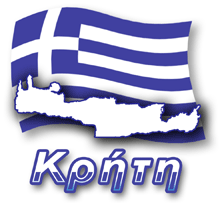
 2023-11-08 20:29:55
2023-11-08 20:29:55
On November 8, 1866, with the weather constantly deteriorating, Ottoman troops surrounded the hill on which the Moni Arkadiou monastery is located. About 250 Cretan insurgents taking part in the fight against the Turkish occupier and the local civilian population, including several hundred women and children, found shelter there. Opposite them stood an enemy army consisting of over 20,000. soldiers equipped with 30 cannons. Some sources even say that there were as many as 23,000 Turkish soldiers. However, even such an overwhelming advantage could not force the Cretans to surrender without a fight. The leader of the Turks was the bloodthirsty Mustafa Pasha Kiritlis. On that day, however, the Ottoman commander made one last attempt to persuade the insurgents to surrender and asked the besieged to surrender. However, the insurgents, led by Ioannis Dimakopoulos and the monastery's abbot Gavriel Marinakis, gave the answer that the Greeks always gave in such cases. The decisive "no" was supported by shots. The clear response of the Cretans caused the Turks to immediately attack the monastery.
The high and well-protected walls of Moni Arkadiou gave the Cretan insurgents the opportunity to effectively defend themselves. Without cover, the Turkish army suffered many losses and the defenders fought like crazy, leaving the Turkish soldiers astonished. Among those fighting on the side of the Cretans were several of the most important heroes: Ioannis Dimakopoulos, Epimenides Maroulis and Kostis Giamboudakis.
Dimakopoulos ran back and forth giving orders and cheering on those fighting on the first line of defense. It is worth realizing what a huge advantage the attackers had. On average, there were 92 Ottoman soldiers per defender. Despite the huge numerical advantage on the Turkish side, the defense was so fierce that Turkish soldiers fell dead under the walls of the monastery, unable to break the brave defense.
Despite repeated attempts to force the barricaded door and burn the windmill occupied by the Cretans, Suleiman's forces still failed to enter the monastery. As darkness fell, the Turks stopped their battles. At night, the Cretans tried to bring in reinforcements. Two messengers disguised as Turks were sent to Amos asking for help. However, since all access roads were previously blocked by Turkish troops, any assistance was impossible.
On the evening of November 9, fighting broke out again. Early that day, the Turks brought heavy guns and the so-called bomba. Thanks to her, the western gate of the monastery was destroyed, which allowed Suleiman's troops to enter the monastery courtyard. Running out of ammunition forced the insurgents to fight with bayonets against the Ottoman soldiers breaking inside. The defending Cretans were pushed into two rooms where gunpowder was stored. Kostis Giamboudakis waited, lit torch in hand, for as many Turkish soldiers as possible to approach. As he dropped the torch onto the dust, a roar split the air and the monastery shook to its foundations. As a result of this explosion, most of the Cretans in the monastery died. It was this last tragic episode of the defense of Moni Arkadiou during the Cretan uprising that made this monastery so important in the history of the Cretan struggle for independence.
After the fight, Ioannis Dimakopoulos was captured by Turkish soldiers and taken to Mustafa Pasha. He handed the 31-year-old lieutenant into the hands of his ruthless soldiers, who brutally tortured him before killing him.
Today marks 157 years since those events, which are the most important act of resistance of the Cretans against Ottoman rule. It moved the whole of Europe at that time, and its message is still valid today. Deputy Governor Maria Lioni from Rethymno said today: " 900 poorly armed people defended their homeland, freedom, religion and died fighting for their faith and homeland. Honor and glory to those who lost their lives for freedom and democracy.
 2023-11-08 20:29:55
2023-11-08 20:29:55
Komentarze
Wypełnij poniższy formularz aby dodać komentarz
lub kliknij w poniższy link aby skorzystać z możliwosci komentowania przez facebooka:
https://www.facebook.com/crete.poland/posts/724573066383627